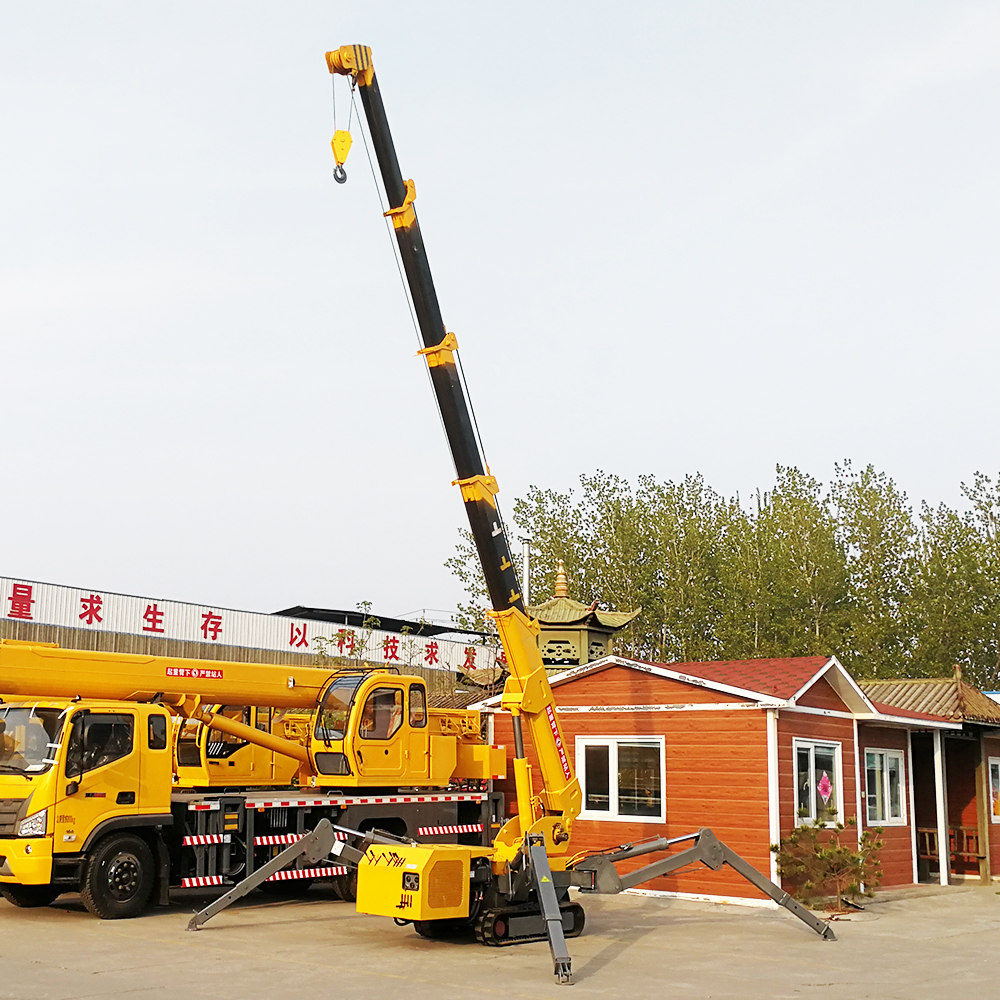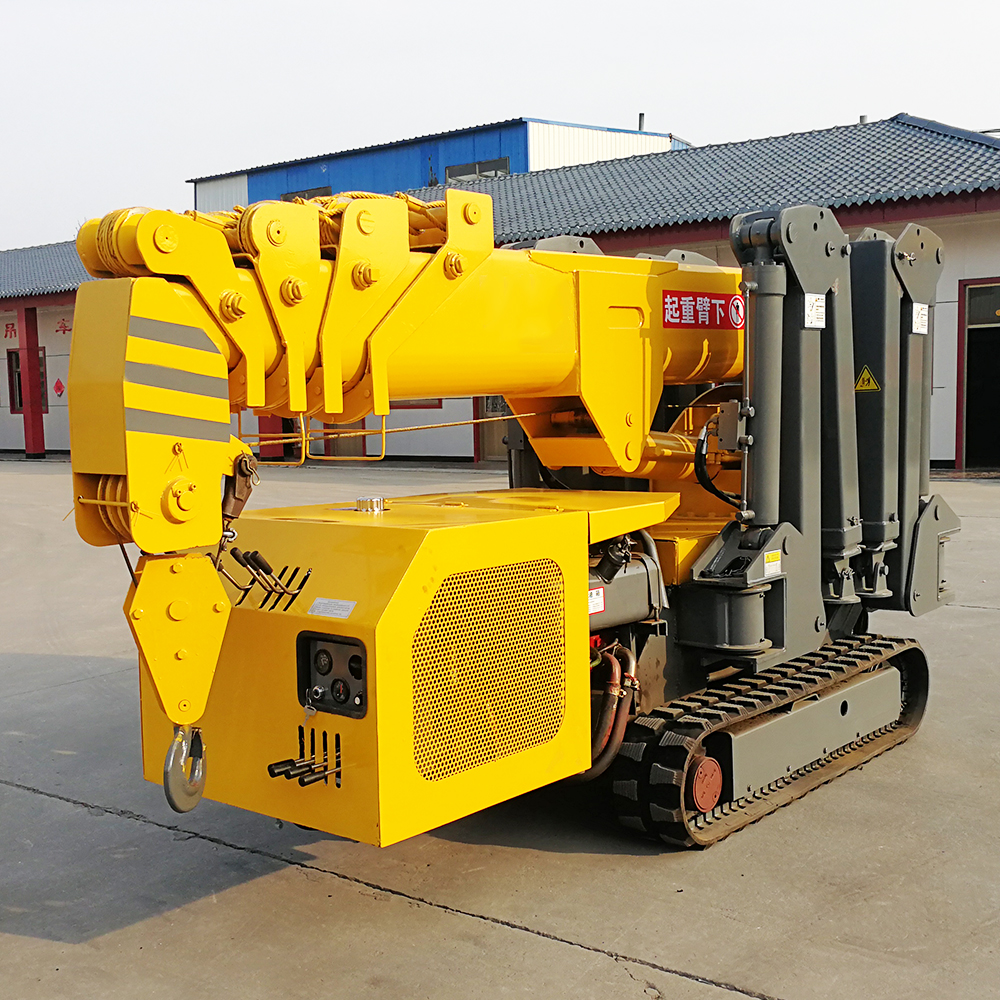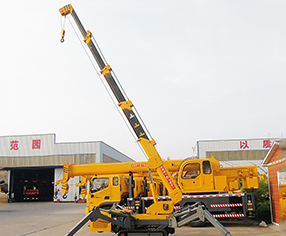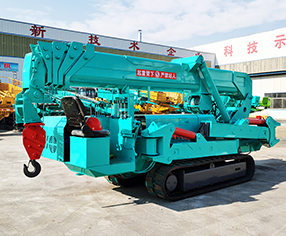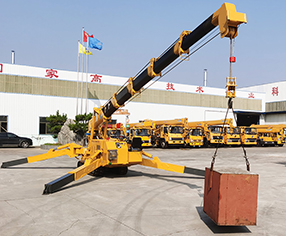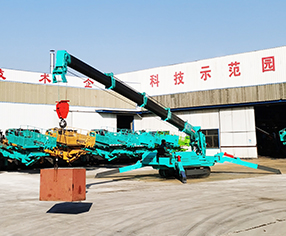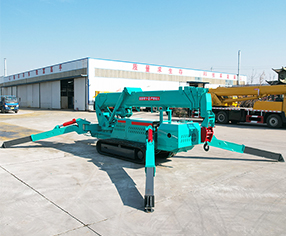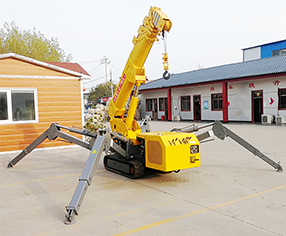
Introduction of 1.2 T Crawler Jib Crane Small Spider Crane Mini Crawler Cranes
Spider crane generally refers to lifting equipment with a lifting capacity of less than 8 t and is easy to transport and use. It has the advantages of general flexibility and can be folded. Such as the installation of indoor glass, the hoisting of indoor wall panels, or the transportation of various small-quality goods up and down floors. To a certain extent, spider cranes can make up for the application limitations of crane machinery, so for indoor work, spider cranes are becoming more and more popular.
Where are spider cranes used?
1. glass engineering
Glass can be installed even under the roof by using the vacuum glass suction cups mounted on the search hook. The spider crane was born to complete the work of glass installation more efficiently. Mini spider cranes are also widely used in indoor, narrow spaces and narrow passages.
2. Curtain wall installation
The spider crane is small in size and convenient in transportation. It is widely used in the process of curtain wall construction. It can be used for vertical transportation, hoisting, etc. The lifting capacity is generally 2~3 tons, which can meet most of the hoisting requirements of the construction site. In addition, the spider crane is also particularly suitable for the installation of unit panels with large changes in the façade.
3. Working in narrow spaces
Even in tight spaces, the spider crane can make a big difference with its four support legs. By making full use of the effective working radius, it is possible to work in confined spaces avoiding obstacles (such as power lines), and also to achieve safe lifting work, which is best for working in tight locations where larger cranes cannot access.
4. roof work
Spider cranes can be placed on roofs and lift materials from the ground. Shorter construction periods and cost reductions can be achieved. Spider cranes can be easily lifted to the roof by a tower crane or elevator.
5. Steel structure and building construction
Spider cranes are suitable for steel structure installation works in various buildings and roofs, as well as steel tower installation works.
Parameters of 1.2 T Crawler Jib Crane Small Spider Crane Mini Crawler Cranes
|
Specification |
1.2t |
|
|
Maximum working radius |
5m * 0.3t |
|
|
Maximum ground lift |
5.8m*0.8t |
|
|
Max underground lift |
--- |
|
|
winch |
Hook up speed |
0-8m/min |
|
Wire Rope Specifications |
Φ8mm * 35m |
|
|
Telescopic device |
Boom form |
4 -section boom , U-shaped high-strength manganese |
|
Boom length/time |
1.7 m- 5 m/2 2 sec |
|
|
undulating device |
Boom angle/time |
0-7 5 °/13sec |
|
gyratory device |
Rotation angle/speed |
0-360° (continuous)/60sec |
|
outrigger |
Outrigger Action Form |
Manual unscrewing + hydraulic automatic support (two legs) |
|
Maximum extension (mm) |
3800 (L) X 3000 (Rear) 、 (Front) |
|
|
walking device |
way of walking |
Hydraulic motor drive, two-speed |
|
Walking speed |
0-2.5km/h |
|
|
Gradeability |
20° (36%) |
|
|
motor |
Voltage |
|
|
engine |
Producer |
gasoline |
|
Type/displacement |
9.6kW |
|
|
Start method |
Electric start |
|
|
Startup performance |
-5°C~40°C |
|
|
fuel/volume |
Gasoline / 8 L |
|
|
battery capacity |
12v 45AH |
|
|
Fuel consumption |
274g/kW-h |
|
|
operating system |
Type of operation (jib/outrigger), manual travel |
Manual operation, manual walking + remote control (optional) |
|
Operating characteristics |
Comai hydraulic system (optional) |
|
|
The standard configuration |
engine power |
|
|
Vehicle size |
Length 2095*width 600*height 1393 |
|
|
Craftsmanship |
Paint assembly process |
|
Photos of 1.2 T Crawler Jib Crane Small Spider Crane Mini Crawler Cranes
